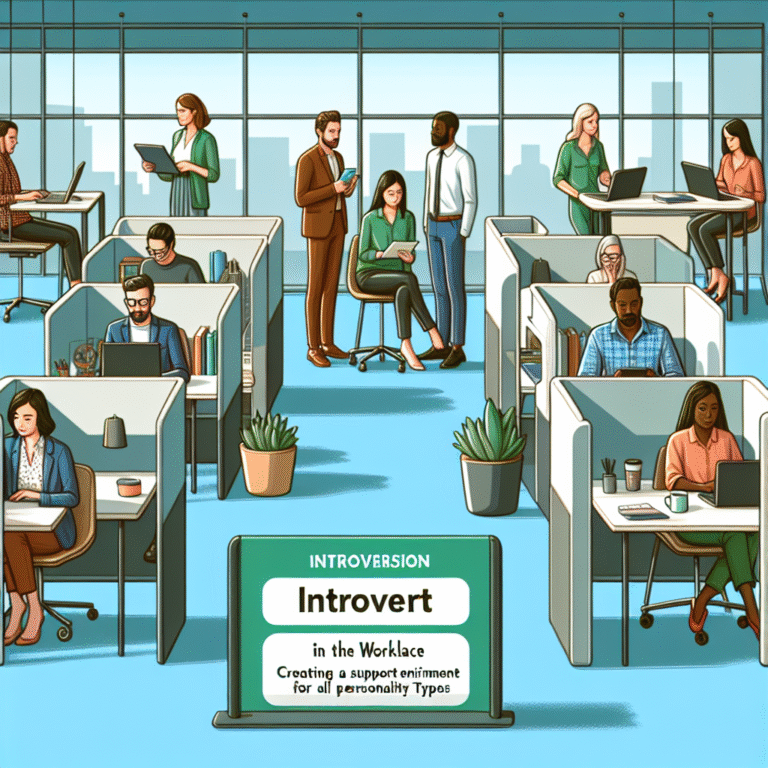
Introduction
In the journey of personal growth, few psychological concepts hold as much transformative power as cognitive dissonance. Imagine standing at a crossroads, filled with conflicting thoughts that challenge your beliefs. This inner turmoil can feel overwhelming, making it difficult to move forward. Yet, understanding and overcoming cognitive dissonance can be your ultimate guide, leading you from conflict to clarity. This article dives deep into how you can navigate this psychological struggle, explore real-world case studies, and foster a more enriching path toward personal development.
What is Cognitive Dissonance?
Cognitive dissonance is a psychological phenomenon that occurs when a person holds two or more contradictory beliefs, values, or ideas. This internal conflict creates discomfort, often leading individuals to change their beliefs or rationalize their behaviors to restore harmony. To truly grasp the power of this concept, let’s consider a few scenarios that illustrate its significance in personal growth.
Case Study 1: The Smoker’s Dilemma
Meet Sarah, a 30-year-old marketing executive who smokes despite knowing its health risks. She believes smoking is harmful (Cognitive A) but continues to smoke (Cognitive B). The dissonance between her knowledge and her actions causes her significant stress. To alleviate this discomfort, Sarah has two choices: she can quit smoking, which aligns her actions with her beliefs, or she can downplay the risks of smoking to justify her habit. This tension between conflicting cognitions can be a powerful catalyst for change or stagnation.
Impact on Personal Growth
Understanding cognitive dissonance in cases like Sarah’s illuminates how internal conflicts can either hinder or accelerate personal development. Overcoming such dissonance is not merely about eliminating the conflict; it’s about transforming it into a stepping stone for growth.
Recognizing the Signs of Cognitive Dissonance
To navigate from conflict to clarity, the first step is recognizing when you are experiencing cognitive dissonance. Here are some signs that may indicate you are in the midst of this mental struggle:
- Increased Stress or Anxiety: A heightened sense of discomfort in making decisions or facing responsibilities.
- Rationalization: Justifying contradictory behaviors, often leading to internal debates.
- Avoidance: Steering clear of situations or discussions that prompt your conflicting beliefs.
- Behavioral Changes: Modifying your behavior as a response to dissonance but without addressing the underlying beliefs.
Case Study 2: Tom’s Career Change
Tom, a software engineer, always dreamed of being a musician. He has a stable job that pays well (Cognitive A) but feels unfulfilled and dissatisfied inside (Cognitive B). His internal conflict leads him to work longer hours and avoid social events related to music, which only exacerbates his feelings of dissonance. By recognizing these signs, Tom can begin addressing the root of his conflict.
Strategies to Overcome Cognitive Dissonance
Embracing cognitive dissonance can lead to powerful insights. Here are systematic strategies to guide you from conflict to clarity:
1. Self-Reflection
Take time to analyze your beliefs and values. Journaling can be a powerful tool in this process. By identifying what truly matters to you, you can better align your actions with your beliefs.
Action Steps:
- Write down situations that cause internal conflict.
- Reflect on why these situations cause dissonance.
- Identify the core beliefs that are in conflict.
2. Acceptance of Discomfort
Accept that cognitive dissonance is a natural part of personal growth. This acceptance can mitigate feelings of anxiety associated with it.
Action Steps:
- Embrace the discomfort as a signal for growth.
- Acknowledge conflicting feelings without harsh judgment.
3. Seek External Perspectives
Consulting with friends, mentors, or a coach can provide invaluable insights. They may see patterns or solutions that you are too close to recognize.
Action Steps:
- Discuss your conflicting beliefs with a trusted friend.
- Seek feedback on how others perceive your situation.
4. Align Your Actions with Core Values
Once you clarify your values, begin aligning your behavior with them. This might mean making tough decisions or initiating change in your life.
Action Steps:
- Create an action plan that reflects your core values.
- Set small, achievable goals to facilitate the transition.
The Role of Mindfulness in Resolving Dissonance
Mindfulness practice can enhance your ability to navigate cognitive dissonance. By grounding yourself in the present, you can observe your thoughts without judgment and gain clarity on your conflicting beliefs.
Case Study 3: Emily’s Journey to Self-Acceptance
Emily struggles with body image issues while trying to promote a fitness lifestyle. She feels a dissonance between her professional persona and self-image. By incorporating mindfulness techniques into her daily routine, she learns to accept her body as it is, easing the internal conflict and allowing her to grow authentically.
The Benefits of Overcoming Cognitive Dissonance
Successfully navigating cognitive dissonance fosters profound growth. Here are some benefits to anticipate:
- Enhanced Self-Awareness: A clearer understanding of your beliefs and values.
- Improved Decision-Making: The ability to make choices that are consistent with your true self.
- Increased Resilience: Developing the capacity to deal with discomfort leads to greater emotional strength.
Measuring Growth: A Simple Table
| Aspect | Before Overcoming Dissonance | After Overcoming Dissonance |
|---|---|---|
| Self-Awareness | Low | High |
| Stress Levels | High | Lower |
| Decision-Making Clarity | Conflicted | Clear |
| Emotional Resilience | Vulnerable | Strong |
Conclusion: From Conflict to Clarity
Cognitive dissonance is not a hindrance; it’s a pathway to clarity and personal growth. By navigating through this mental challenge, you find opportunities to realign your beliefs, embrace authenticity, and strengthen your resilience. Remember, personal growth is a journey, not a destination. By using the strategies outlined in this article, you are empowered to turn conflict into clarity.
Motivation for Action
Now is your time! Embrace the discomfort, reflect on your values, and take actionable steps to overcome cognitive dissonance. You hold the keys to your personal growth journey—unlock your potential and stride confidently toward a fulfilling life.
FAQ Section
Q1: What if I can’t identify the root of my cognitive dissonance?
It can be challenging to pinpoint the source of dissonance. Start by journaling about your feelings and beliefs, and consider seeking guidance from a coach or therapist for deeper insights.
Q2: Is cognitive dissonance always negative?
Not at all. While it can create discomfort, cognitive dissonance can also serve as a powerful catalyst for change and personal growth.
Q3: Can mindfulness really help resolve cognitive dissonance?
Yes! Mindfulness promotes self-awareness and acceptance, allowing you to observe your conflicting thoughts more objectively, which can lead to greater clarity.
Q4: How long does it take to overcome cognitive dissonance?
The timeline varies for everyone. Engaging proactively with your conflicts can hasten the resolution, but allow yourself grace throughout the process.
Q5: Is it possible to feel dissonance in relationships too?
Absolutely. Relationships often involve complex beliefs and values. Recognizing dissonance in these contexts is crucial for fostering understanding and growth.
Navigating through the mental landscape of cognitive dissonance can be transformative, leading you from conflict to clarity. Embrace the journey, and let it shape you into the best version of yourself.










